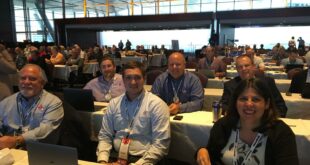Addressing Recalled Sprinklers Changes Significantly
NFPA 25, Standard for the Inspection, Testing, and Maintenance of Water-Based Fire Protection Systems, is still in cycle for the next edition. The upcoming changes were based on almost 300 public inputs and just over 170 public comments. Although the process isn’t completed there are some general trends and changes that are worth flagging. The focus of this article is on Chapters 1 to 5 and 13. These are just some of the changes and are not meant to indicate they are the most important. For those items, the best approach is to wait until the process is completed, just in case it changes.
One significant item was an attempt to provide better clarity on who is responsible for performing the different activities. There seems to be a prevalent attitude that the owner is responsible only for Chapter 4 and that the inspection service providers are responsible for Chapters 5 through 13 on the systems. This may stem from section 4.1 being labeled – Responsibility of Property Owner or Designated Representative. The first clue on this issue is 4.1.1 that explicitly states that the property owner is responsible for maintaining the fire protection systems. It is not expected that the owner will perform all or any of the functions but they can do as little or as much as they are willing and able (when qualified) to do so. This will be emphasized by annex text stating in A.3.3.24: “Any portion or all of the inspection, testing, and maintenance can be contracted with an inspection, testing, and maintenance service. Similarly, any portion or all of the inspection, testing, and maintenance can be performed by qualified personnel employed by the property owner or designated representative.”
A related issue on hiring a service provider is what activities should be performed when one is hired to conduct an annual inspection. This is a problem because there is no such thing as an annual inspection. There are activities that are performed annually, just like weekly, monthly, or quarterly items. Although this is a contractual issue, the committee weighed in by saying that when a provider performs activities at a specified frequency, that they should also perform all activities required at a more frequent interval.
A third service provider-related issue addressed the term “maintenance.” The old definition in 3.3.25 identified it as work performed to keep equipment operable or to make repairs. So, if you contracted to perform an inspection and said you would perform the maintenance per NFPA 25, the definition indicated that once you found a broken component, you also had to repair it (presumed by some to be done at the price of the inspection). The phrase “or to make repairs” was deleted.
Returning more to a linear presentation, let’s look at the scope. Historically, the scope section has always said that NFPA 25 does not apply to a system designed and installed per NFPA 13D, Standard for the Installation of Sprinkler Systems in One- and Two-Family Dwellings and Manufactured Homes. Then the 2014 edition added a new Chapter 16 – Special Requirements From Other NFPA Standards where requirements for inspecting NFPA 13D systems were extracted from the Life Safety Code® when installed in small residential board and care occupancies. It’s worth noting that the International Building Code also allows NFPA 13D systems to be installed in Institutional I-1 occupancies. That inspection wrinkle was fixed though by the International Fire Code requiring these systems to be treated like an NFPA 13R, Standard for the Installation of Sprinkler Systems in Low-Rise Residential Occupancies, system.
A potential hiccup regarding the NFPA standards referenced in Chapter 2 was addressed. By listing the latest editions of the installation standards, one could interpret it to mean that repairs must be performed based on that edition. The saving grace was the retroactivity clause within the installation standards. To help avoid having to make that step, a similar clause was added to Chapter 2. Note that this focuses just on the installation standards. There is no such clause regarding new requirements added to NFPA 25 so they do apply to existing systems.
When discharging water while performing tests, there is the potential for some damage to occur. Previously, this was addressed just in Chapter 13 where it stated before opening a test or drain valve to verify that provisions have been made for the drainage. Since this implied it was the inspector’s responsibility (for which they usually do not provide provisions for facilities), Chapter 13 was modified to indicate that care should be taken so as to minimize any damage and similar text was added to Chapter 4.
The requirement for signage continues to expand. Previously, it was added to Chapter 4 that a sign is required indicating that an antifreeze system exists. Now one is required indicating the type of antifreeze, the concentration by volume of the solution, and the volume of the system. There is also a requirement in Chapter 5 to verify that the sign is in place and legible.
As expected, Chapter 5 saw a lot of changes. Table 5.1.1.2 on the summary of activities was reformatted. It is in alphabetical order instead of by frequency and when another chapter is referenced, it now just identifies the chapter instead of the section therein. Any reference to gauges was deleted (requirements were compiled in just Chapter 13). Sprinklers are no longer always required to be replaced when there is some minor corrosion. This accounts for areas like pools where the color can change but have no discernible impact on operation. The reference to pipes being in good condition was deleted as an unenforceable item. The example of cold storage as a harsh environment requiring a five-year sprinkler test was deleted. A reminder was added that the replacement cover plates or escutcheons for recessed, flushed, and concealed sprinklers must be listed for that individual sprinkler. If that part is no longer available, the sprinkler is to be replaced.
Two of the bigger items in Chapter 5 are residential sprinklers previously listed at less than 0.05 gpm/ft2 and recalled sprinklers. Since there are no longer any residential sprinklers listed at such lower flows, what do you do when one needs to be replaced? Some have been required to recalculate the system resulting in very expensive modifications. As long as the K-factor and the area of coverage correlate, current sprinklers can be used as replacements. The issue of recalled components has been a constant and challenging issue for many cycles. The upcoming attempt to reduce the existing recalled sprinklers focuses on the annual inspection of the spare sprinkler. Although getting recalled sprinklers replaced is very desirable, it’s a liability nightmare. Part of the problem is that you cannot always identify whether a sprinkler is part of the recalled products versus a newer replacement model. There will be an indication that the inspector will not be required to maintain an up-to-date list and that the Consumer Product Safety Commission is a source for information. One very helpful piece of information is that Underwriter’s Laboratory flags any recalled sprinklers that are submitted for testing. If in doubt, have them tested regardless of whether they have reached the age that would normally trigger it. If recalled sprinklers are identified, the owner is to be notified in writing. The owner is then required to determine whether the facility itself contains recalled sprinklers.
Chapter 13 also saw a lot of activity. It started with the title that will now be called “Common Components and Valves.” Part of the effort to put common items in one location (which reduces redundancy but more importantly highlights conflicts), pressure gauges were deleted from all other sections and compiled in section 13.2.7.
The information was also reformatted so that requirements are based on the medium being monitored (water or air/nitrogen) instead of implying the medium based on type of system. Many of the inspection intervals were extended such as water gauges from monthly to quarterly as well as the hydraulic design sign from quarterly to annually. It’s interesting that many of the frequencies were originally driven by the attitude that you were there looking at something else so might as well look at X. Although a good idea, making it a requirement is not prudent. The testing frequencies were also increased on items like electrical supervision. Another nice cleanup is that preaction and deluge requirements were divided into separate sections. They were combined since they are rather similar but not identical so the old format required one to know the nuances in order to understand what applied where.
As already stated, the process is not completed and some items may change but the overall usability of the standard is improving. It’s also worth noting that although the standard seems a little out of control in its zeal to check all things, the technical committee has acknowledged that changes regarding this issue are needed. It’s just when it came to making actual changes, reaching consensus was a challenge. The consideration of a relative cost/ benefit comparison (didn’t say analysis since that implies greater detail than really necessary) has also been discussed as a needed consideration. I mention these things because it provides hope for the future editions.
 ABOUT THE AUTHOR: Roland Huggins, PE is the vice president of engineering and technical services for the American Fire Sprinkler Association. He is a graduate of the University of Maryland and a member of the NFPA. Huggins has served on the NFPA Standards Council and is a member of multiple NFPA technical committees, including NFPA 13, NFPA 25, and NFPA 5000 (Building Code). NFPA activities include participating on the editing of the Sprinkler Handbook and Fire Protection Handbook. Other national activities involve the NFPA Research Foundation, UL Standard Technical Panels, and NICET. Huggins is a veteran.
ABOUT THE AUTHOR: Roland Huggins, PE is the vice president of engineering and technical services for the American Fire Sprinkler Association. He is a graduate of the University of Maryland and a member of the NFPA. Huggins has served on the NFPA Standards Council and is a member of multiple NFPA technical committees, including NFPA 13, NFPA 25, and NFPA 5000 (Building Code). NFPA activities include participating on the editing of the Sprinkler Handbook and Fire Protection Handbook. Other national activities involve the NFPA Research Foundation, UL Standard Technical Panels, and NICET. Huggins is a veteran.
IMPORTANT NOTICE: The article and its content is not a Formal Interpretation issued pursuant to NFPA Regulations. Any opinion expressed is the personal opinion of the author and presenter and does not necessarily represent the official position of the NFPA and its Technical Committee.
 Sprinkler Age A Publication of the American Fire Sprinkler Association
Sprinkler Age A Publication of the American Fire Sprinkler Association
